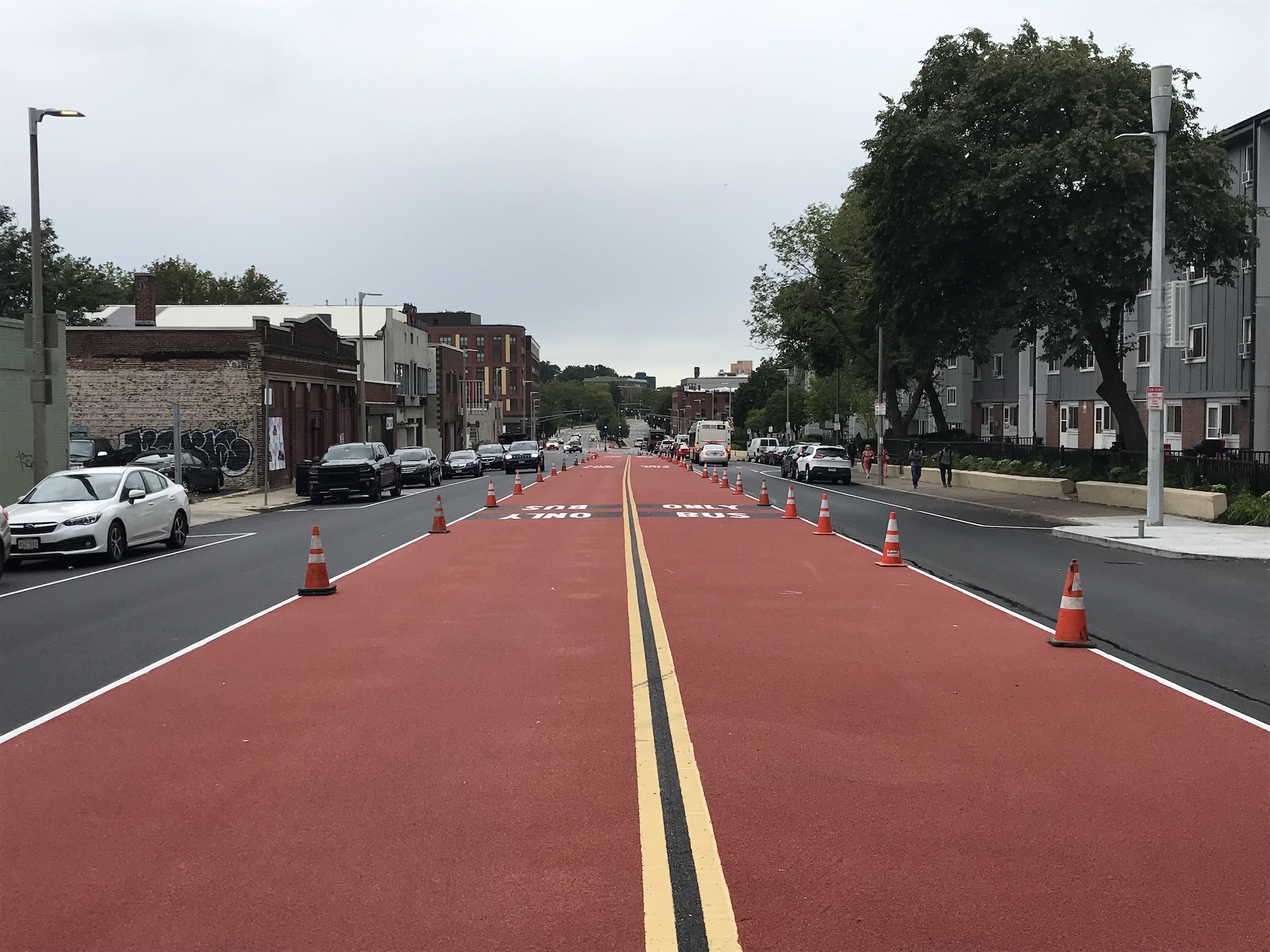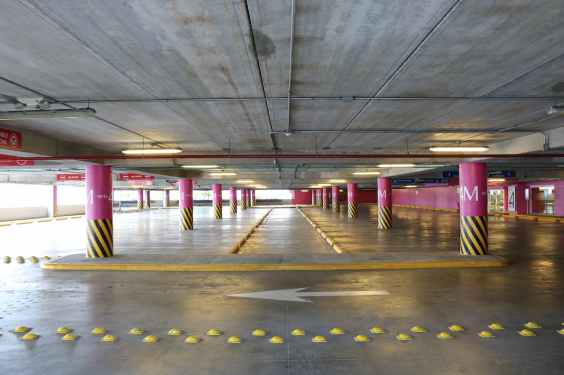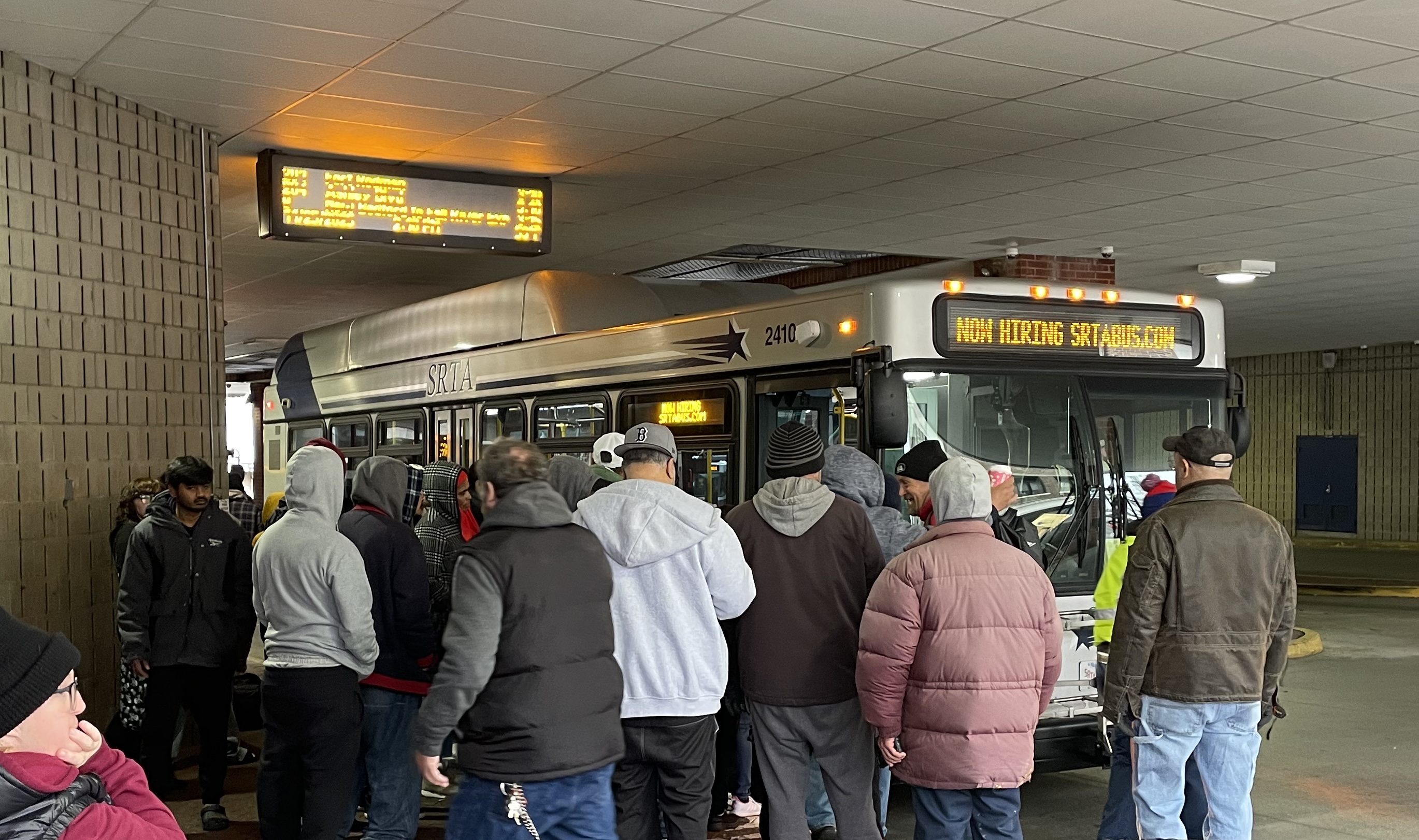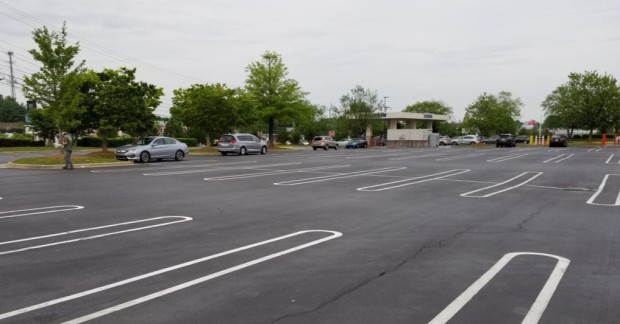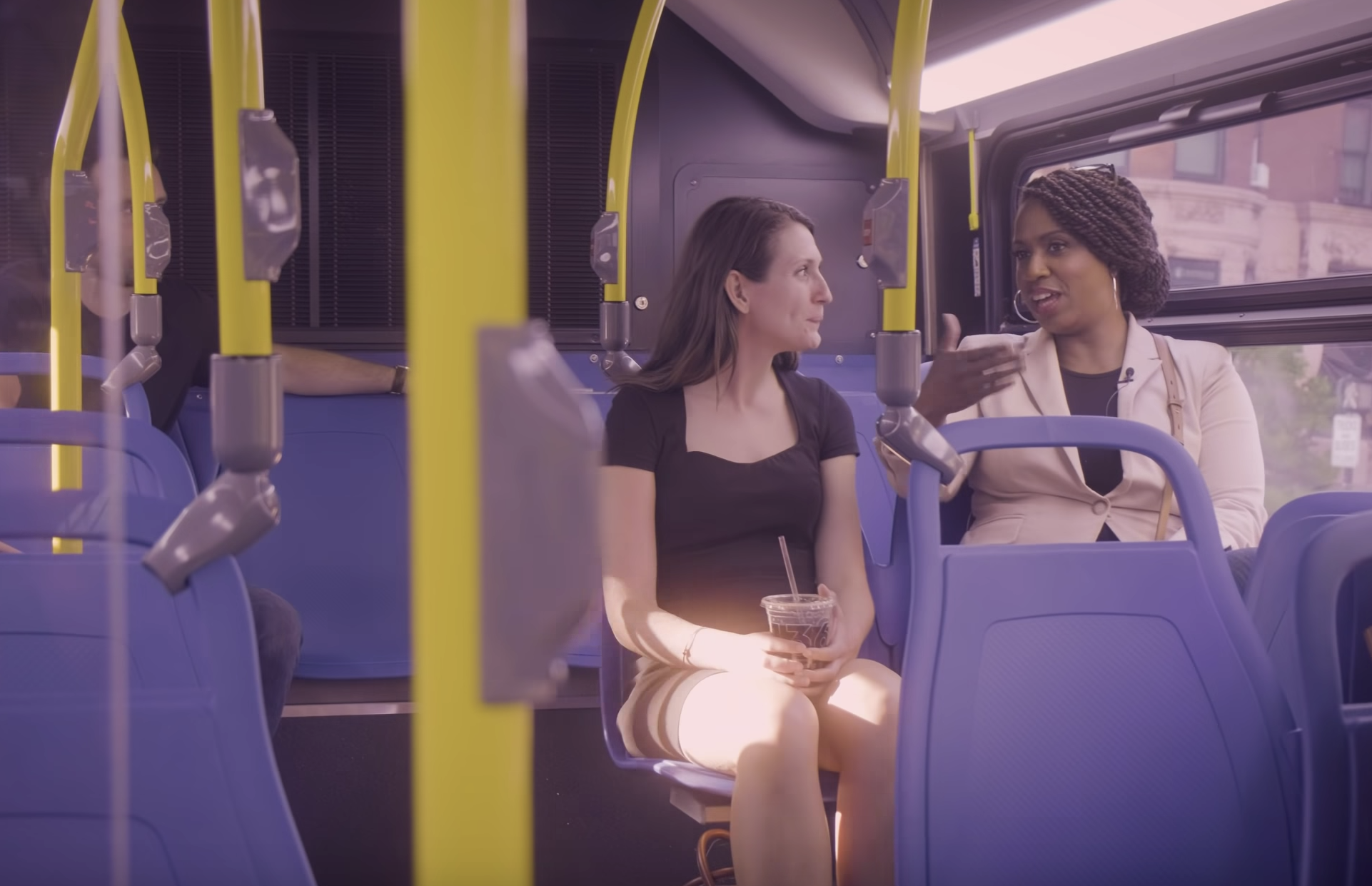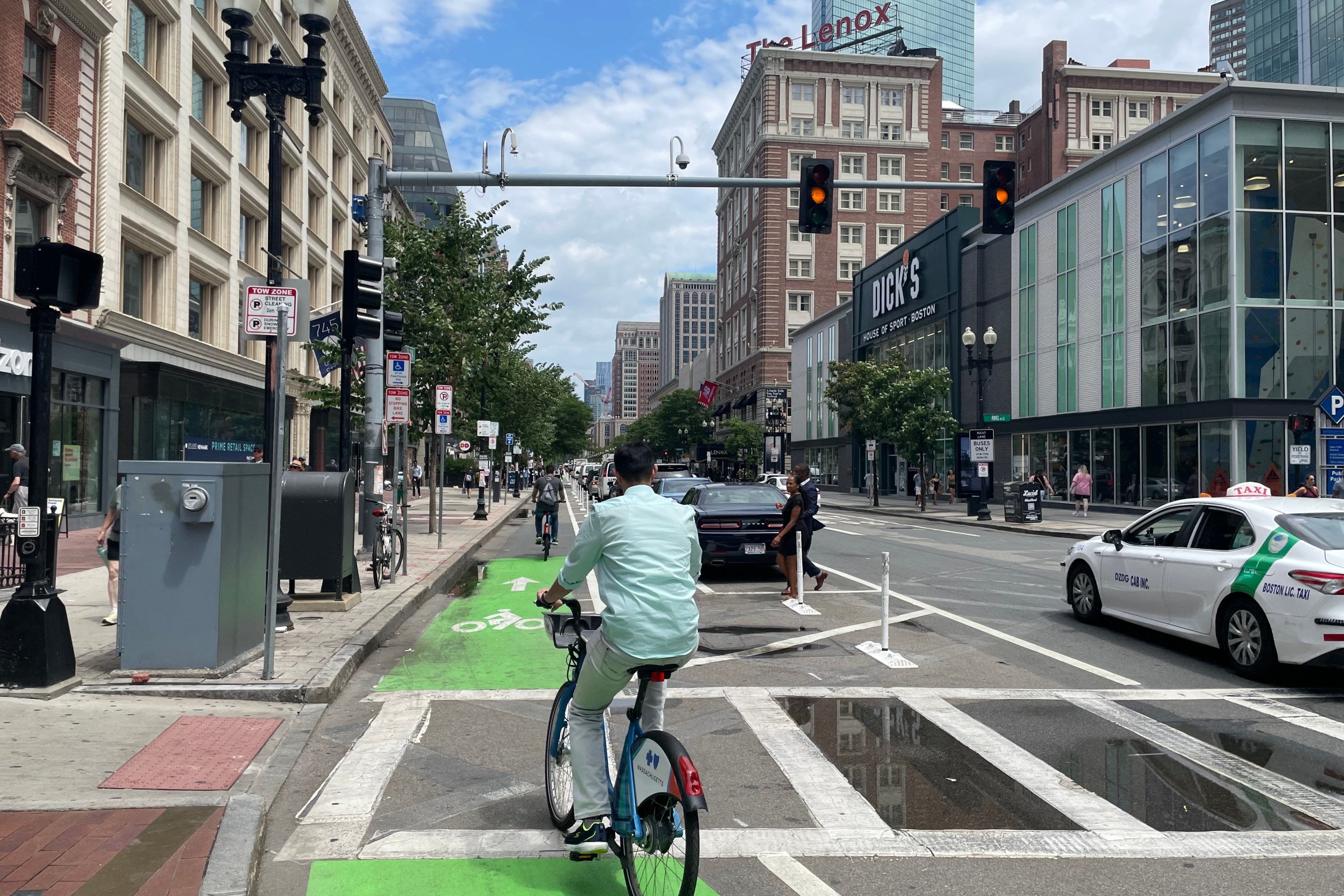In a virtual meeting for municipal stakeholders and transit advocates on Wednesday morning, the MBTA's Bus Network Redesign team shared a first look at a new "high-frequency" bus network for the region that could be implemented in phases over the next three to five years.
The map is still being refined and is subject to ongoing changes in response to feedback from riders and other stakeholders.
But it illustrates the T's overall strategy to provide simpler, more frequent bus service for transit-dependent neighborhoods like Dorchester, Chelsea, and Mattapan, and better service to growing neighborhoods like the Seaport and the Longwood Medical Area.
“We’re talking about 7-day, frequent service with dedicated transit-priority infrastructure to provide the levels of frequency we’re looking for," explained Caroline Vanasse, the Manager of Transit Planning at MassDOT.
These routes would also feature "more early-morning and late-night service, and more weekend service as well," said Vanasse. "The addition of more Sunday service really distinguishes this from our current key bus route service standard.”
The MTBA's 15 existing "key bus routes" run at least every 10 minutes during peak commuter hours, every 15 minutes during the midday, and every 20 minutes on evenings and weekends.
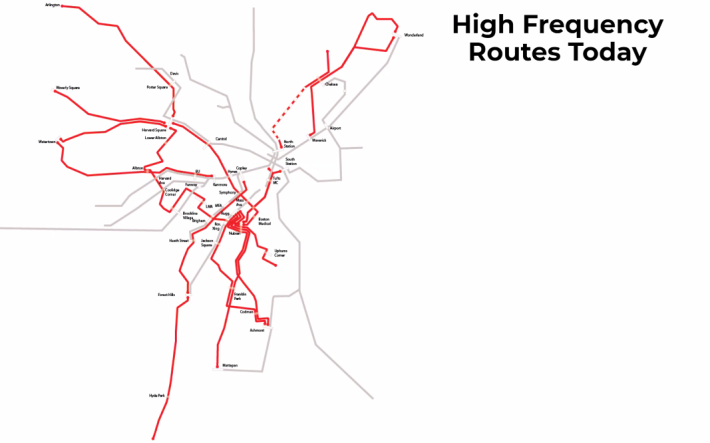
“There aren’t really a lot of these high-frequency routes, and there are big gaps: we have nothing in Everett, for instance, or Somerville and Medford,” said Melissa Dullea, Senior Director of Service Planning at the MBTA.
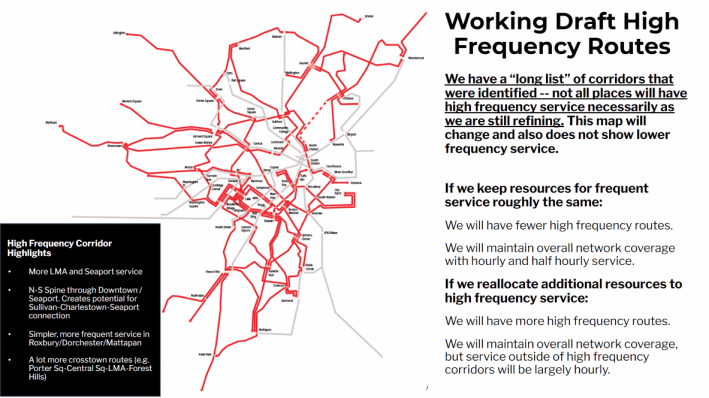
The proposed network, by contrast, "has a lot more cross-town connections," said Dullea. "There a lot more direct connections to and through the LMA (Longwood Medical Area). We’re adding multiple connections there from Dorchester, using our beautiful new Columbus Avenue bus lanes.”
Vanasse acknowledged that "areas like LMA are currently very challenging to get bus service in and out” with serious traffic congestion and delays on existing bus routes.
“The infrastructure to support these routes is critical, and won’t all be done in the first phase of bus network redesign," said Vanasse. "There’s going to be an ongoing discussion with our partners."
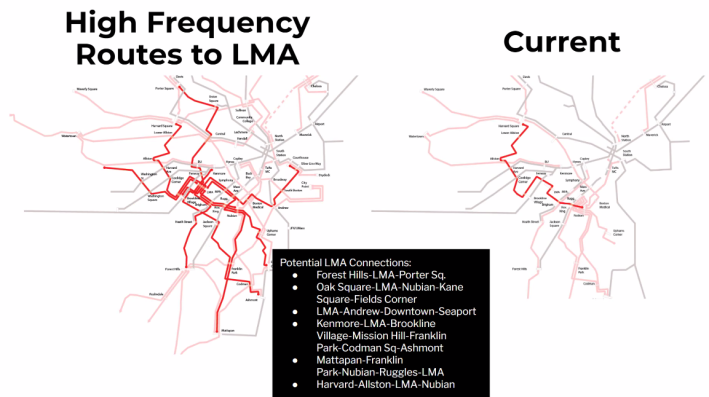
The T hopes to begin implementing the new network in phases over the next three to five years, with the first phase of route changes in place as early as next year.
To generate this proposal, the T’s planners used data on travel demand from surveys and anonymized cellphone location data to evaluate travel demand throughout the region, with additional weight given for riders of color, who currently endure much longer transit trips than white riders, and for neighborhoods with higher numbers of transit-dependent households.
They emphasized that the same method can be reused as regional conditions change. "This isn't a 'one-and-done' redesign," explained Vanasse.
The project team also warned that there would be tradeoffs in implementing a larger network of high-frequency bus routes. Investing more service on these routes would require reductions in service on other routes, with buses that run hourly or half-hourly.
The details of how those other, non-frequent bus routes would operate are still being worked out.
The T plans to conduct public outreach for its bus network redesign this fall, with street teams meeting riders to discuss the project in October, and a virtual public hearing for the bus network redesign project is being scheduled for October 27th at 6 pm.
Previously on StreetsblogMASS:
